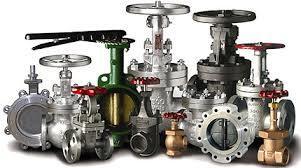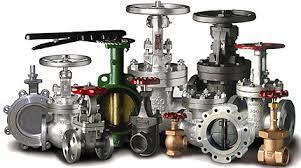Types of Valves Used in the Oil & Gas Industry

VALVE TYPES
Valves used in the oil and gas industry and for piping applications can be classified in multiple ways:
VALVES BY DISC TYPE
- LINEAR MOTION: gate, globe, diaphragm, pinch, and check valves
- ROTARY MOTION: butterfly, ball, plug, eccentric- and swing check valves
- QUARTER TURN: devices that require approximately a quarter turn motion, from 0 to 90° of the stem to move from fully close to a fully open position or vice versa.
| Oil & Gas Valve Types | Linear motion valves | Rotary motion valves | Quarter turn valves |
| Gate valve | X | ||
| Globe valve | X | ||
| Check valve | X | ||
| Lift check valve | X | ||
| Tilting-disc check valve | X | ||
| Stop check valve | X | X | |
| Ball valve | X | X | |
| Pinch valve | X | ||
| Butterfly valve | X | X | |
| Plug valve | X | X | |
| Diaphragm valve | X | ||
| Safety valve / Pressure Relief Valve | X |

VALVES BY BODY MATERIAL
- CAST (the body is obtained by casting steel). The main casting materials for valves are listed in this article.
- FORGED (the body is manufactured by forging steel)
VALVES BY TYPE OF ACTUATION
- MANUAL: the valve is operated manually, via levers, wheels and/or gears;
- ACTUATED: the valve is actioned via electromechanical devices, called actuators, that may be electric, pneumatic, hydraulic and gas over oil
VALVE BY DESIGN
- GATE VALVE: This type is the most used in piping and pipeline applications. Gate valves are linear motion devices used open and close the flow of the fluid (shutoff valve). Gate valves cannot be used for throttling applications, i.e. to regulate the flow of the fluid (globe or ball valves should be used in this case). A gate valve is, therefore, either fully opened or closed (by manual wheels, gears or electric, pneumatic and hydraulic actuators)
- GLOBE VALVE: This type of valve is used to throttle (regulate) the fluid flow. Globe valves can also shut off the flow, but for this function, gate valves are preferred. A globe valve creates a pressure drop in the pipeline, as the fluid has to pass through a non-linear passageway.
- CHECK VALVE: this type of valve is used to avoid backflow in the piping system or the pipeline that could damage downstream apparatus as pumps, compressors, etc. When the fluid has enough pressure, it opens the valve; when it comes back (reverse flow) at a design pressure, it closes the valve – preventing unwanted flows.
- BALL VALVE: A Ball valve is a quarter-turn valve used for shut-off application. The valve opens and closes the flow of the fluid via a built-in ball, that rotates inside the valve body. Ball valves are industry standard for on-off applications and are lighter and more compact than gate valves, which serve similar purposes. The two main designs are floating and trunnion (side or top entry)
- BUTTERFLY VALVE: This is a versatile, cost-effective, valve to modulate or open/close the flow of the fluid. Butterfly valves are available in concentric or eccentric design (double/triple), have a compact shape and are becoming more and more competitive vs. ball valves, due to their simpler construction and cost.
- PINCH VALVE: This is a type of linear motion valve that can be used for throttling and shut-off application in piping applications that handle solid materials, slurries and dense fluids. A pinch valve features a pinch tube to regulate the flow.
- PLUG VALVE: Plug valve is classified as a quarter-turn valve for shut-off applications. The first plug valves were introduced by the Romans to control water pipelines.
- SAFETY VALVE: A safety valve is used to protect a piping arrangement from dangerous overpressures that may threaten human life or other assets. Essentially, a safety valve releases the pressure as a set-value is exceeded.
- CONTROL VALVE: these are valves to automate complex petrochemical processes.
- Y-STRAINERS: while not properly a valve, Y-strainers have the important function of filtering debris and protect downstream equipment that may be otherwise damaged
VALVE SIZES
To make sure that valves of different manufacturers are interchangeable, the face to face dimensions (i.e. the distance in mm or inches between the inlet and the outlet of the valve) of the key types of valves have been standardized by the ASME B16.10 specification.